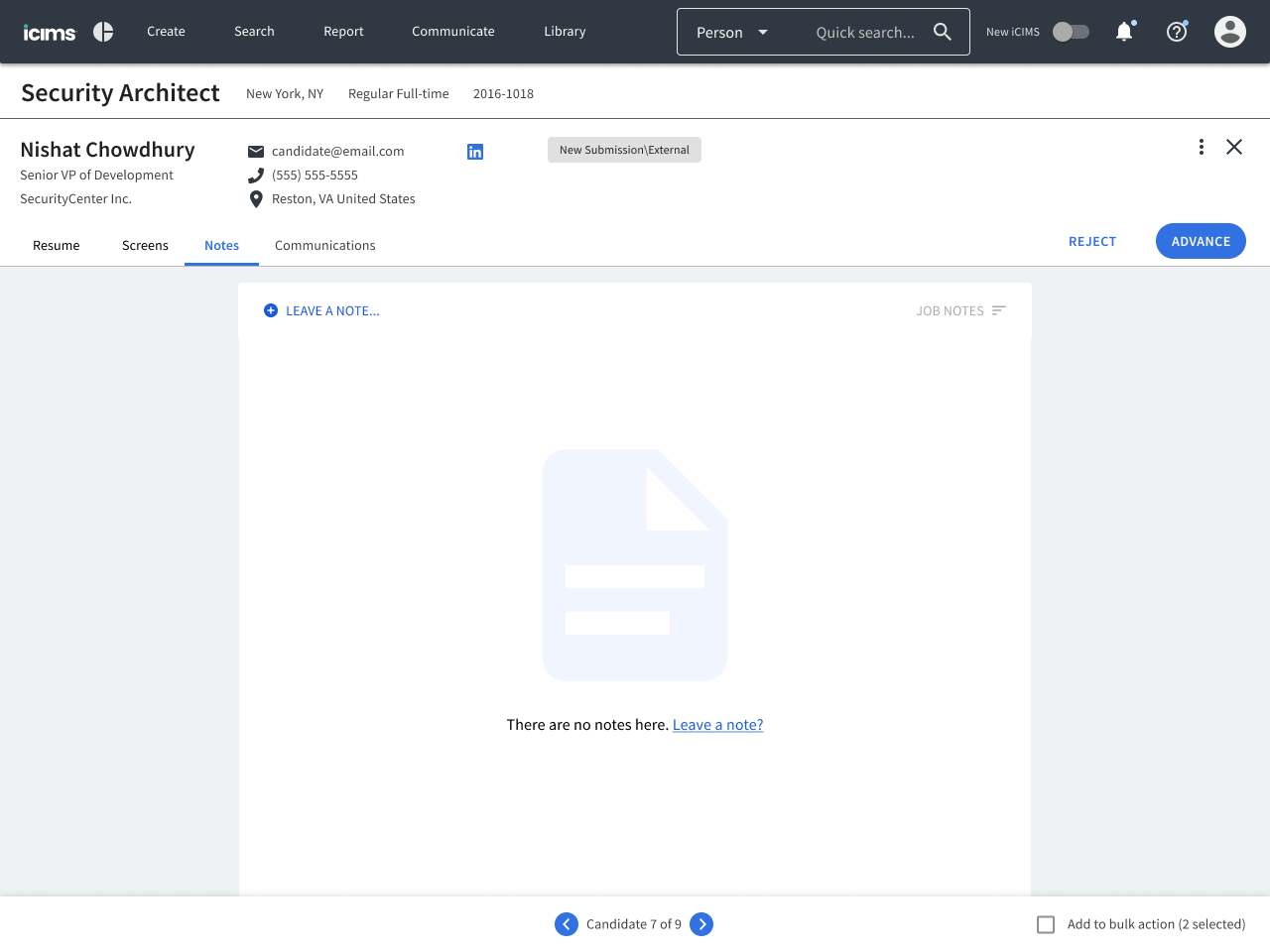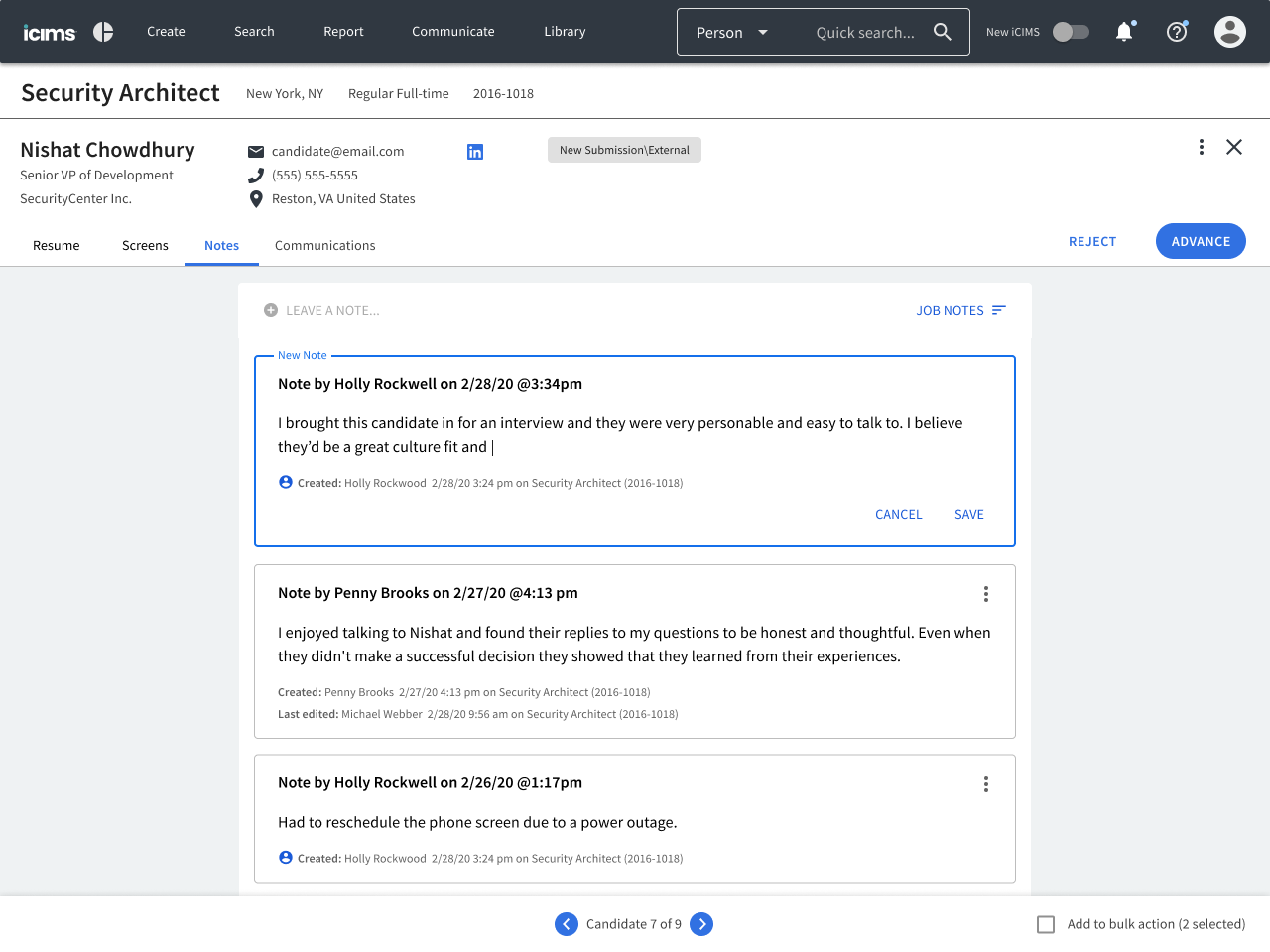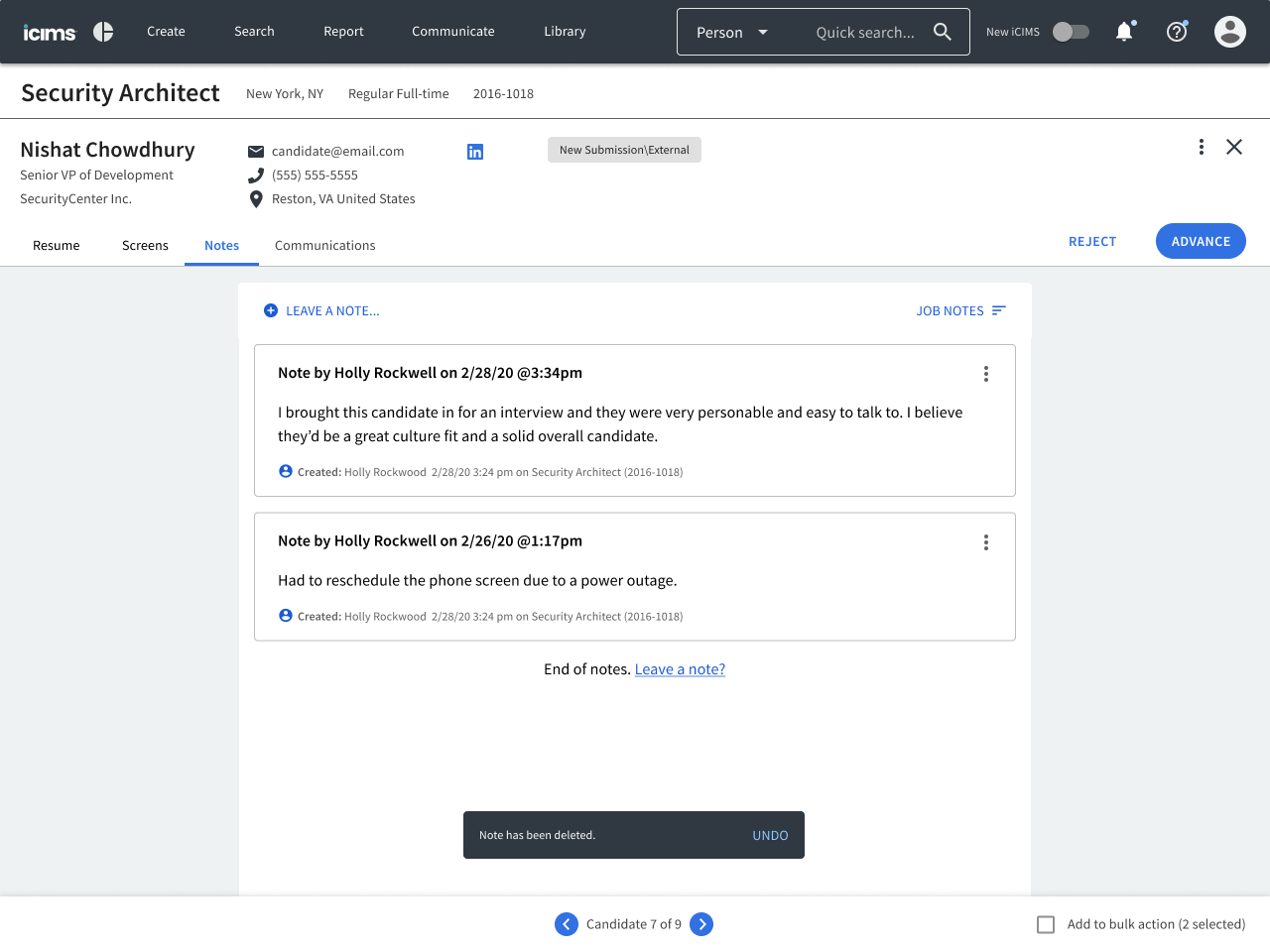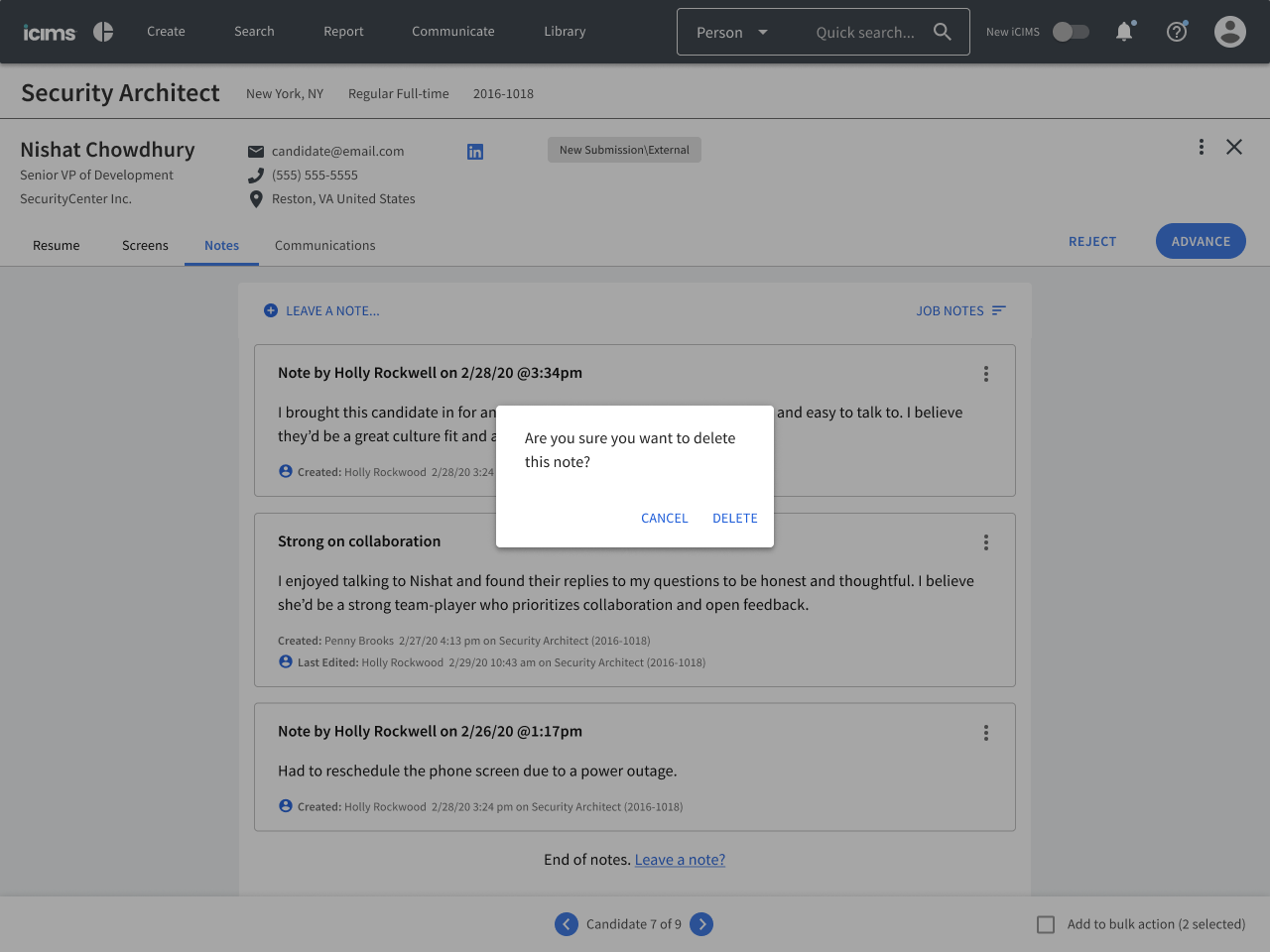Candidate Profile
The candidate profile is where all of a candidate’s data and interactions are stored, from initial contact through to offer, once they’ve been entered into the system.
Overview
Historically iCIMS' software has been extremely customizable, which while offering a lot of freedom also allows users to create completely broken experiences and has a high barrier to entry. We wanted to keep some of the customizable options while providing some guide-rails to help streamline processes and shift in the direction of a more unified workflow to aid new customers in getting set up with less overhead.
Role
My role was sole product designer, responsible for the initial concepts, research, wireframes, and prototypes.
Team
Technical Product Manager
Principle Product Manager
Principle Software Engineer
Two agile teams (5 developers each)
Duration
Six months. Work had already begun on the Candidate Profile prior to my being assigned to it. For these features work began in April and, loosely followed a dual-track agile process: I would feed an agile team's current backlog while working 2-3 sprints ahead (less successfully at the beginning and then moreso toward the latter half as I got further ahead).
What were we trying to solve?
We were hearing from our customer success managers (which we would later validate through interviews) that recruiters were spending a lot of time context-switching and hunting around for data points. We also heard that both recruiters and hiring managers wanted a simpler way to get a sense of where a candidate was in the hiring process.
Goals
Provide quick access to key data
Increase findability and reduce usage effort of communication/feedback features
Alignment
We set up a bi-weekly meeting to share in-progress design work with stakeholders and our Customer Success Managers to make sure we stayed aligned throughout the project.
Constraints
A business decision was made to not disrupt current users of the platform by redesigning the existing platform, but instead to create a separate opt-in experience in which to test out features with the future goal of transitioning users over. This afforded a bit more flexibility and the ability to experiment without having to worry about breaking anything, but the downside was that this experience mainly attracted early adopters.
How did we decide which features to tackle first?
Looking at our analytics we knew which features had the heaviest usage. We wanted to spend most of our time improving the most highly-used features (resume, screening questions, and messages), while also spending some time improving a feature with low usage that we'd been hearing a lot of feedback about (notes), as well as adding a new, requested feature (quick view).
Discovery
Competitive analysis
I conducted a competitive analysis
SmartRecruiters had the most available access
User Reseach
I spoke with five recruiters
Definition
Our UX Research team had created a journey map for all the roles that contribute to job creation through to onboarding a new employee. We focused in on the part of the journey that the Candidate Profile touched:
User journey map created by our the Research team
Who is it for?
The primary users are Recruiters. Secondary users are Sourcers and Hiring Managers.
Evaluation of existing features
The existing Notes feature in action.




Here is a link to the Figma prototype: Notes Prototype
This is the updated feature in production
Improvements
The feature was improved in a few key areas:
All notes were now able to be added and edited in-line, eliminating the pop-up window.
Subject lines were auto-generated with the name of the logged-in user and a timestamp to reduce notes with blank subjects (auto-generated subject lines are also editable upon creation).
A filter was added to show notes that were system-generated, or left on other jobs, related to the same candidate
What worked
Overall the reception of the Notes feature was received as an overall improvement from the existing feature. Recruiters and Hiring Managers commented that they were happy to be able to see the all notes on a candidate’s profile at a glance and adding new notes was simple and intuitive.
What didn’t work
The main complaint that came up during usability testing was the fact that Notes was still relegated to its own tab, where recruiters would like the ability to see them alongside other information (such as taking notes while reviewing a resume).
What’s next
In doing research on the IA of candidate profiles, one of the areas the came up multiple times was the desire to be able to leave a note from anywhere. Another suggestion that came up was the ability to add tags to notes to help sort/organize. These suggestions were brought to Product’s attention and planned for a future enhancement.
Results
“New iCIMS” is effectively in a beta state (not having full feature-parity with the current platform). Since it isn’t currently possible for users to use the product end-to-end it’s not possible to give a clear measurement of adoption. However, outside user feedback we do have some stats on increasing usage over time:







